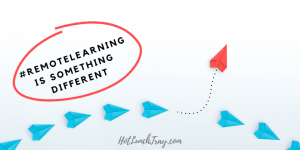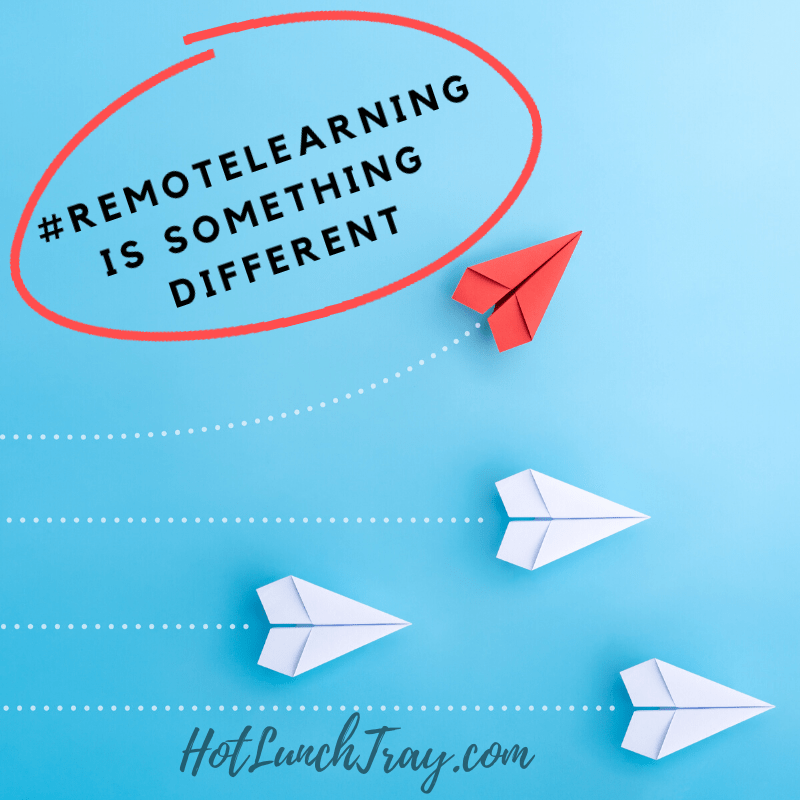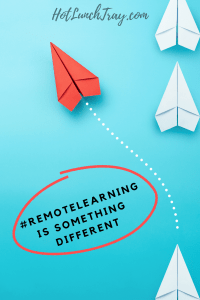I have the background of a face-to-face K-12 teacher, an online graduate student, and someone who has studied blended learning for the past ten years. But this Remote Learning is something different than face-to-face/online/blended learning.
We use familiar terms because we need to at the outset of something like this. We need families to understand what we are doing, what we want them to do, and a rough estimate of the outcome at which we are aiming. The longer our inadvertent break from our traditional schooling continues though, we are all noticing how this is different than the past.
Face-to-face versus Online

Initially, you can understand why some parents thought the change was from face-to-face to online learning. The physical location of the learner versus the manner of education is the source of the definition. It is important for educators to be precise and accurate with our words so that we can use the same set of terminology as we talk about best practices and potential improvements.
I thought I had enumerated the totality of the learning continuum, but like many of us, I need to revise my point of view in light of this new way of teaching, with face-to-face teachers and structures through online tools – remote learning. Which happens online.
Is this Online Learning?
So, what would I add to my 2016 Where are you on the Learning Continuum post? I would add Remote Learning between Blended Learning and Online Learning. And while I stick with the spirit of my 2015 Forget Online, Think Blended post, I’d point out that if Remote Learning were a long-term sustained effort it would be Online Learning, but as a temporary response to conditions, Remote Learning is temporary and still is closer to Blended Learning than Online Learning.
So is this #BlendedLearning Then?
Blended Learning is based in a face-to-face environment and includes teacher control over how much content is offered online versus face-to-face in class. There is no teacher control of on/offline, but there is some other control that the teacher retains.
Teachers retain control over the content they present and how the students experience it: Introduce yourself and maintain a presence in the online classroom (Introduce & Maintain). Revise the type of work that you assign, this isn’t the time for digital worksheets. Leverage the digital subscriptions you have access to for your students to consume content and then create through those subscriptions. In a short-turn-around situation, point to vetted content and ask students to create while offering guidelines for success (rubrics). This preserves your resources for conferencing with small groups as needed and allows open-ended assignments for students.
The single most important similarity between the current Remote Learning and Blended Learning is the personal selection of non-negotiables – but not quite the same choices as to when we expected face-to-face meetings on the regular.
Synchronous versus Asynchronous
We all agree that this is online, not face-to-face. Maybe a better conversation is should all teaching and learning be synchronous?
When all students are in class at the same time then synchronous teaching works. When students may access content online at different times, synchronous is not the best solution. While synchronous meetings are perfect for targeted teaching, think small groups or accommodations/interventions, they are not effective as a whole group model.
Remote Learning
Remote Learning is new and needs a new formula for success.
Consider that your new non-negotiables are selecting the experiences which are offered synchronously versus asynchronously.
While we are in a rapid-onset Remote Learning situation we are reliant on what we already had in place, but ask a Blended Learning teacher how the transition was for him/her and his/her students… As soon as this rapid-onset Remote Learning is over, consider making yourself a Blended Learning teacher immediately, so that if this happens again you can simply leverage what you have established more intelligently and enjoy a less steep learning curve.
Looking Forward
Don’t let this surprise you again. As this school year ends, make a list of the things you’d like to have in place already if something like this happens again. Consider adding this to your syllabus/parent handouts. Also, while we may return to face-to-face classroom positions, stand up your Blended Learning content for this school year as soon as possible. Being a strong Blended Learning teacher is the strongest defense against being under-prepared for future Remote Learning situations.







2020-04-14 at 3:28 pm
Great Post!! I never thought I would be teaching from home! I definitely was not ready!!
Holly recently posted…Chocolate Makes My Pain Worse